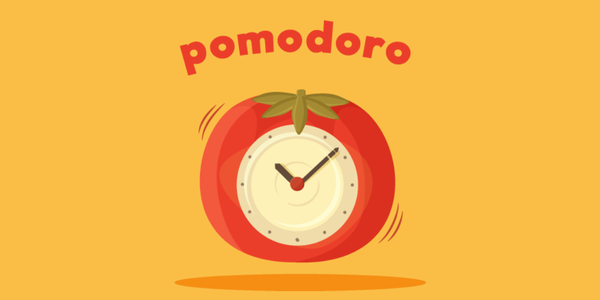Are you tired of losing focus after just 10 minutes of studying? Do distractions constantly interrupt your study sessions? If you’re nodding yes, you’re not alone—and you’re about to learn a technique that can turn it all around.
In this article, we’ll dive deep into the Pomodoro Study Method, explain how it works, why it’s so effective, and how you can use it to stay on top of your study game. Whether you’re a high school student prepping for exams, a college student juggling multiple deadlines, or a lifelong learner trying to master new skills, the Pomodoro Technique might just be the productivity tool you’ve been searching for.
What is the Pomodoro Study Method?
The Pomodoro Technique is a time management method developed by Francesco Cirillo in the late 1980s. Named after the tomato-shaped kitchen timer (“pomodoro” is Italian for “tomato”), the method is deceptively simple yet incredibly effective.
The Basic Structure:
-
Choose a task you want to focus on.
-
Set a timer for 25 minutes (this is one Pomodoro).
-
Work on the task without interruption until the timer rings.
-
Take a 5-minute break to rest and reset.
-
After four Pomodoros, take a longer break (15–30 minutes).
This cycle of focused work and strategic rest helps keep your mind fresh and boosts productivity over time.
Why the Pomodoro Technique Works
At its core, the Pomodoro method works because it:
-
Breaks large tasks into manageable chunks.
-
Fights procrastination with short, focused sprints.
-
Encourages mindful breaks, reducing burnout.
-
Trains your brain to focus in short bursts, improving mental endurance.
It’s essentially a battle-tested way to make the most of your time and attention.
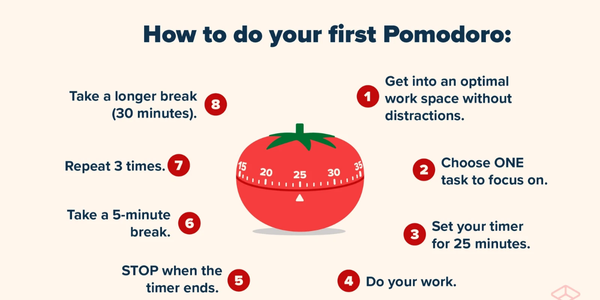
The Psychology Behind the Pomodoro Technique
Let’s explore why our brains respond so well to this method.
1. Time Urgency Triggers Focus
Knowing there’s a ticking timer increases your sense of urgency, which helps eliminate distractions. You’re less likely to check your phone or scroll through Instagram if you know you only have 25 minutes to get something done.
2. Frequent Breaks Prevent Mental Fatigue
Sitting for hours trying to power through work leads to decision fatigue and exhaustion. But 5-minute breaks after each Pomodoro allow your brain to reset, keeping you alert.
3. Gamification Increases Motivation
Tracking each Pomodoro can be strangely satisfying. You get a sense of achievement with each completed session, much like crossing off a to-do list item.
How to Use the Pomodoro Method for Studying
Let’s break down how you can put the Pomodoro Study Method into action.
Step-by-Step Guide
-
Pick Your Subject or Task
-
Example: “Study chapters 1–3 of Biology textbook.”
-
-
Set Your Timer (25 Minutes)
-
Use your phone, a physical timer, or a Pomodoro app (like Focus To-Do or Pomofocus).
-
-
Eliminate Distractions
-
Turn on Do Not Disturb mode, close social media tabs, and let others know you’re in a study sprint.
-
-
Work with Focus
-
No multitasking—just dive into the material.
-
-
Take a 5-Minute Break
-
Stretch, walk around, grab water—just don’t stay at your desk.
-
-
Repeat
-
After 4 Pomodoros, reward yourself with a longer break.
-
Tip: Adjust the time intervals to suit your needs. Some students prefer 50-minute work blocks with 10-minute breaks—find what works best for your rhythm.
Real-World Example: How It Helped Me Study for Finals
During my junior year in college, I was swamped with final exams. No matter how early I started, I always found myself overwhelmed. That’s when a friend introduced me to the Pomodoro Technique.
I broke my study schedule into 25-minute blocks, focused on one subject at a time, and took regular breaks. Not only did I retain more information, but I also felt less stressed. The best part? I had guilt-free time to relax because I knew I had earned it.
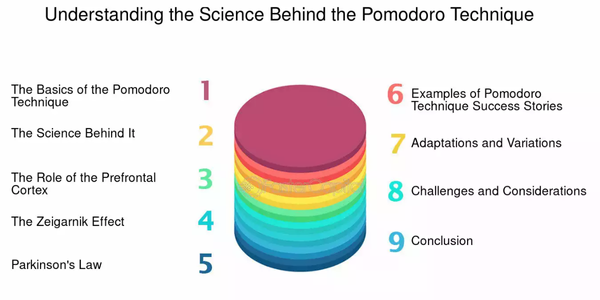
Tools to Enhance Your Pomodoro Study Sessions
There are countless tools to help you make the most of this method:
Best Pomodoro Timers & Apps:
-
Pomofocus.io (simple and free web app)
-
Focus To-Do (mobile + desktop, integrates with task management)
-
Forest App (gamified, plant a virtual tree as you stay focused)
Physical Tools:
-
Tomato-shaped kitchen timer (of course!)
-
Noise-canceling headphones
-
Distraction-blocking browser extensions (like StayFocusd)
Adapting the Pomodoro Technique to Different Study Styles
Not everyone studies the same way. Here’s how you can tweak the method:
For Visual Learners:
-
Use your 25 minutes to create mind maps or flashcards.
-
Review colorful notes during breaks.
For Auditory Learners:
-
Listen to recorded lectures during a Pomodoro.
-
Review aloud what you just studied during breaks.
For Kinesthetic Learners:
-
Use physical tools like whiteboards.
-
Move around while reviewing notes—pace or gesture to stay engaged.
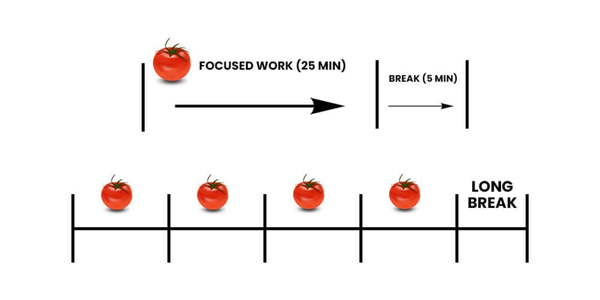
Pomodoro Technique vs. Traditional Study Methods
| Feature | Pomodoro Technique | Traditional Cramming |
|---|---|---|
| Session Length | Short (25 min) | Long (1–4 hrs) |
| Breaks | Frequent | Rare or none |
| Focus Level | High | Wanes over time |
| Burnout Risk | Low | High |
| Retention & Recall | Improved | Lower |
The Pomodoro method isn’t just about managing time—it’s about managing energy, motivation, and attention.
Common Mistakes to Avoid
-
Not Planning Tasks Before Starting
-
Don’t hit “start” on your timer without a clear goal.
-
-
Skipping Breaks
-
Breaks are part of the process—skipping them leads to fatigue.
-
-
Multitasking
-
Focus on one task per Pomodoro for best results.
-
-
Being Too Rigid
-
If something’s not working, adapt! The goal is productivity, not perfection.
-
When the Pomodoro Technique Might Not Work
While this method suits many, it may not be ideal if:
-
You’re in a creative flow and stopping every 25 minutes feels disruptive.
-
You have long tasks requiring deep work without interruption.
-
You need more flexibility in your study sessions.
Alternative: Try “Time Blocking” or “90-Minute Focus Sessions” for longer, immersive tasks.
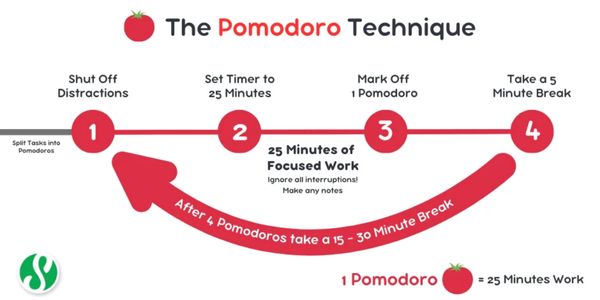
Final Thoughts: Why You Should Try the Pomodoro Study Method
The Pomodoro Technique offers a structured, flexible, and science-backed way to study smarter—not longer. It empowers you to take control of your focus, fight procrastination, and enjoy your free time guilt-free.
Whether you’re preparing for finals, tackling a research paper, or just trying to finish your homework without zoning out, the Pomodoro method can help you make the most of every study session.
Try It Today!
Now that you’ve had the Pomodoro study method explained, it’s your turn to try it out.
✅ Pick a task.
⏱️ Set a timer.
💪 Get to work.
And don’t forget to leave a comment below—have you tried the Pomodoro Technique before? What’s your biggest challenge with staying focused while studying?
Looking for more productivity hacks? Check out our related post: 10 Study Techniques Backed by Science.
